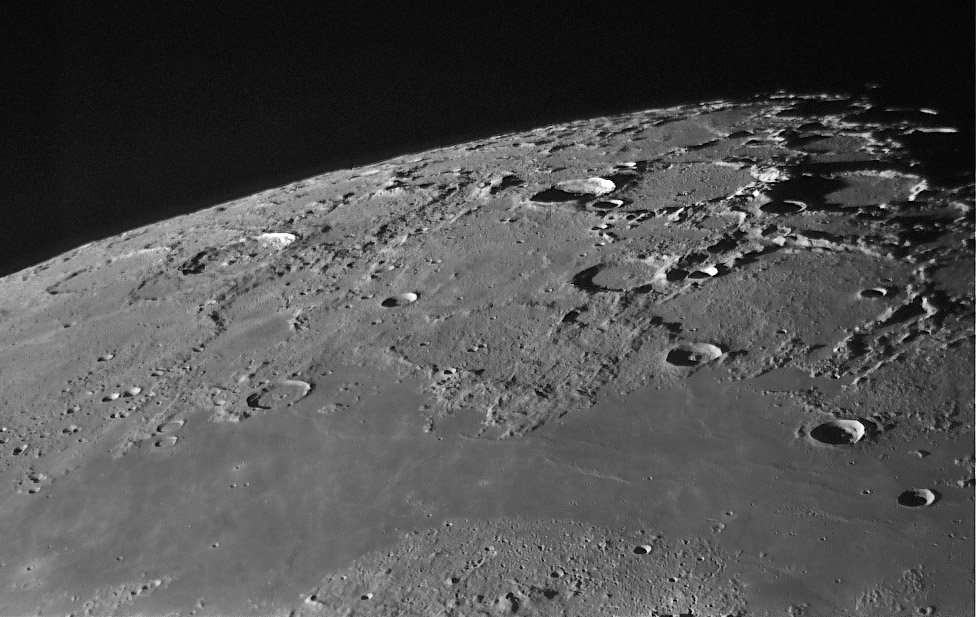October 31, 2008
Sub-Polar Marker

image by Richard Bosman, Netherlands
Even with a poor libration that hides the extreme north polar region, Richard's crisp view provides plenty of interest. Notice the curved apron of Plato's ejecta at the bottom center - the mare so cleanly edges the boundary, the ejecta must be very even and continuous here. Across the gulf of Frigoris lavas is more ejecta, but from the formation of the Imbrium basin. The rubbly deposit, well seen on the floor of W. Bond (large shallow crater to the right), is of much smaller blocks than nearer the basin rim on the backside of the Alpes or the Caucasus. For a few hundred kilometers further north the hummocky material continues, gradually giving away to smooth surfaces where ejecta may have acted almost like a liquid. The ejecta from the geological instant of basin formation makes a time marker so that its generally easy to say a feature is older than 3.84 b.y., when Imbrium formed, or is younger. The twin-peaked crater Philolaus (far left) and the half-shadowed Anaxagoras (top, center) are clearly younger, as are two smaller craters Timaeus and Archytas (mid-right). Look at the other craters and try to see if they are pre- or post-Imbrium.
Chuck Wood
Technical Details
October 20, 2008, 03:37 UT; SCT 2800 mm @f10 + dmk31
Related Links
Rükl plates 3 & 4
Richard's homepage
Yesterday's LPOD: Rotated Mountains?
Tomorrow's LPOD: An Old Fault?
COMMENTS?
Register, Log in, and join in the comments.



